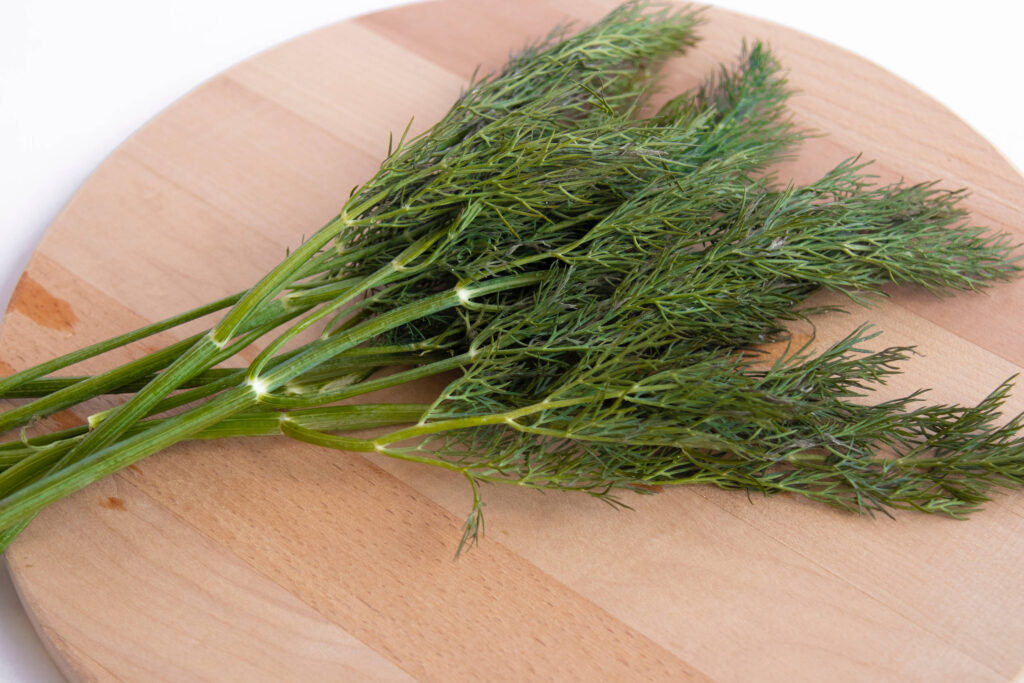
Dill is a great herb, and it is kind of funny that it is called a weed. But both the herb and the dill seeds are loaded with nutrients. Let’s look at some of the nutrients and some of their functions; then we can look at some of the medicinal uses; and then how to grow dill.
- Copper: involved in normal growth, the cardiovascular system, lung elasticity, neovascularization, neuroendocrine function, and iron metabolism
- Folate aka B9: involved in creating genetic material (DNA and RNA); helps form red blood cells
- Iron: used to make hemoglobin, a protein in red blood cells (carries oxygen) throughout the body, and myoglobin, a protein that provides oxygen to muscles. Iron is also used to make some hormones; aids cognitive processes; supports healthy hair, skin and nails; and converts blood sugars into energy
- Magnesium: involved in over 380 functions in a basic cell; involved in neural, muscular; cardio, bone processes
- Manganese: involved in neural functioning (brain and nervous system), the metabolism of sugars and fats
- Potassium: involved in neural functioning; regulating cellular fluids; and muscle contractions (including the heart)
- Vitamin A: essential for good vision; supporting the immune system and plays a role in male/female reproduction; also plays a role in and growth and development. Vitamin A contributes to healthy heart and lungs. Vitamin A also helps your heart, lungs, and other organs work properly.
- Vitamin B2: involved in producing cellular energy
- Vitamin C: involved in immune function; bone formation; wound healing; skin and cartilage; as well as being an important antioxidant
- Zinc: involved in the immune system
In addition to vitamins and minerals, dill also has a number of phytonutrients that are important:
- Flavonoids: Are one of the subcategories of polyphenols. They have been associated with a reduced risk of heart disease, stroke, and some forms of cancer. They may also play an important role in brain health.
- Terpenoids: Are found in essential oils and protect against liver, heart, kidney, and brain diseases.
- Tannins: Responsible for bitterness in many plant foods, tannins have been shown to have potent antioxidant properties, as well as antimicrobial effects.
So, in herbal medicine, dill is classified as a carminative, meaning it soothes the gut. The word comes from an old norse word, dilla which means to soothe. It also helps with breastfeeding.
When it comes to the heart, the heart association claims that 75% of heart disease could be prevented by changing diet, smoking and exercise habits. And of course, dill has great flavonoids for the cardiovascular system – they protect the heart with their antioxidant functions and with their anti-inflammatory functions, as well as helping to regulate cholesterol and blood sugars.
Monoterpenes are a subcategory of terpenes and are naturally occurring plant compounds that are linked to anticancer, antiviral, antifungal, and anti-inflammatory properties and of course, found in dill – wow!! Research has shown that one of the monoterpenes, called d-limonene, prevents and treats lung, colon and breast cancers, but no research has worked directly with dill, although dill has a high concentration of d-limonene.
You can obviously use dill in your dietary menu in salads, on fish, etc but you can also make a dill tea, which is particularly good to settle the gut. If you need something stronger, a dill tincture is a good bet.
Now, dill can be grown in a wide variety of geographical places because it can be grown inside. Outside it is a spring-summer plant that prefers a well-drained, slightly acidic but moist soil. It loves lots of rich organic matter. It doesn’t like the hot heat, so if in more tropical areas, make sure you a shade cloth. Although they do love the sun – just not hot.
You can keep dill short and busy if you keep pruning it back and you can grow it in a pot.
You need to keep replanting it as it will only last for 90-120 days. So once i have started one, i plant a new one every month. So take a dill cutting, a stem with at least 3 to 4 inches of new growth, and snip it off with a sharp set of shears. Place the cutting in a glass of water (removing leaves below the water line) and wait about 2 to 3 weeks for roots to grow. You do not need to use a rooting hormone or fertilizer. Then plant. They don’t like to be uprooted so make sure you place them where you want them.
Here’s to growing dill; using it in your diet; and using dill medicinally.
Dr Holly
